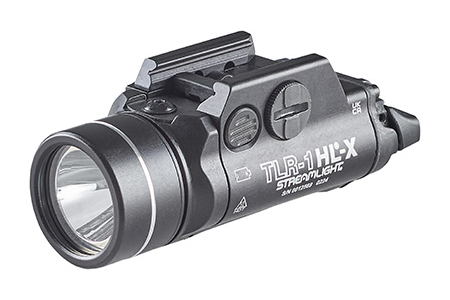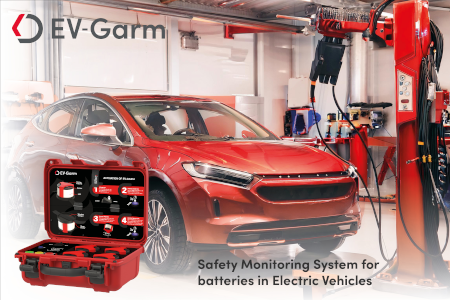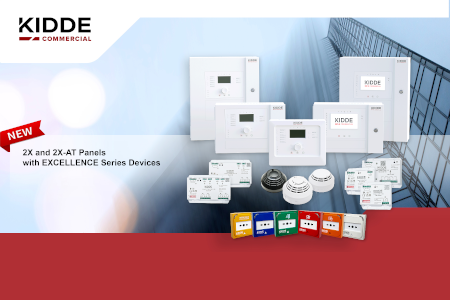Give us a quick history of Leader
It’s a long story! I started by managing a company that was dealing with fire-fighting and safety equipment in France. This involved supplying and servicing the equipment. Both companies are based in the area around Le Havre, in Northern France. I then employed a manager to look after the other company, and I focused my attentions on Leader.
For ten years we promoted fire-fighting equipment all over Europe, which we were not manufacturing at that time. In 1994 I hired an engineer so we could start designing and manufacturing our own equipment. Today, I can say that we are manufacturing 75% of the equipment we sell around the world. What I should say is that we distribute some third-party equipment, mainly in France and Germany, but we sell all of our own equipment worldwide.
What benefits does having the entire design and manufacturing process in-house bring to the company?
As soon as you work worldwide, it is essential to ensure your customers and distribution network benefit from a full capacity of improvements and customer service. As I said, in 1994 we started designing our own fans, after which we designed our fire trainers and then, since 2005, technical search equipment. When you design and manufacture your own products, you can check and validate the quality and performance you claim. That way you can be sure that your customers will be getting exactly what you promise.
Having been a distributor for years, and still being one to some extent, we know that there is a limit to any insurance, shall we say, and as soon as we manufacture and design our own equipment we can really back up our distributors and customers. Sometimes we have to review a particular product, but we are proud that as a company we never leave a customer’s project unfinished if we couldn’t do it the first day – that is only possible if you design your own products.
Tell us a bit more about the very first product that you, as a company, designed and really made Leader the company it is today.
The very first one was the PPV fan, which we started to design in 1996, and was launched in 1997. This equipment is now well known; I would say we are the number one in Europe today, and are starting to become known across the world. These fans are renowned for their high performance.
There will definitely be some improvements to our fans in the future. Also, together with improved performance, we have looked to focus on ease of use. Fire-fighters are looking for easy equipment – anything complicated is a nightmare for them to use in an emergency. Due to the training that is needed and the fact that they can be called out at any time of day or night, fire-fighters need to have very simple equipment to use, and that is what we have made. A lot of the features on our products are based on how easy they are to use. We combine high performance with ease of use.
Again, it all boils down to ultimately what the customer requires and their needs.
Well, one thing I can say about our design process is that we discuss a lot of ideas with our customers. We receive suggestions from them, take it to a committee and finally decide which features will be included on the upcoming product. It’s a long process to develop a new product here at Leader! It’s not a case of coming up with an idea one day and then making it the day after – it’s a lot more involved than that.
We made our first fans in 1997, and the new generation came in 2007, with a completely new design that was really innovative at that time. It took several years to come up with the ideas, from speaking to our customers.
For fire-fighting equipment, we have designed some new foam equipment. So, we can move air with our fans and now we are looking at making foam as well. We are already building foam generators, and will be launching a range of automatic foam proportioners for variable flow and pressures in 2015.
We have also recently acquired the company Robwen in the US, about two months ago.
What was the rationale behind that acquisition?
For the past 25 years or so, Robwen have been making foam systems that have proven to be very simple, but also very practical and very useful. The two companies knew each other well and it made sense that, as we were about to launch our own foam proportioning system, it would be good for us to work together.
We will gain expertise from them, but will also be able to bring our own knowledge as well. The fact that they are based in the US helps us to better enter that market, knowing that we intend to continue manufacturing our products in the US. On that note, while we manufacture in France, and we design and test all the products in our factory in Le Havre. We are very focused on developing markets as well as established ones. In France and Germany, we have two very well-established European markets, but we are looking to expanding markets in Latin America and China as well. We have subsidiaries in various parts of the world. Our oldest one, LEADER GmbH, is in Germany, and that is performing very well indeed. We have another base – LEADER North America – in the US, which started almost five years ago and is now doing well too. We have agencies in Latin America and China. I also think that siin we will have an agency in the rest of Asia as well.
What is the company’s most popular product?
To continue on our product lines, we have already covered the fire line of products – the PPV fans and the foam equipment. The second service we offer is fire-fighter training. In the year 2000, we began work on designing a range of fire trainers. They are now well-known in a range of markets, including France, of course, but also Scandinavia and Germany. This opens the door to another type of customer.
The third product line we offer, which started in 2007, is for search and rescue applications. Here, we have life detectors – both seismic and radar-type sensors – as well as victim locators, which comprise of a camera and a microphone to be able to locate and speak to victims. We also offer structural movement monitors. These are sensors that detect movement of a structure to warn rescue teams that a collapse may be imminent. Development of this line has been a slow process but today, worldwide, we are becoming really well known for our tech rescue equipment in terms of sales figures. In 2013 we launched our second generation of this equipment. I can say that now we are reaching a much higher level of performance for our customers. Our equipment is now accepted by FEMA (The Federal Emergency Management Agency) in the US, which means a lot to us. It took us five years to achieve that. Our willingness to evolve and have equipment corresponding to their needs is something my team can be proud of.
Another advantage of our search and rescue equipment, and one that FEMA appreciated was that we use wireless sensors. Such equipment, traditionally, came with many wires, which as you can imagine, is very difficult for the rescuers. It can be as much as two or three times quicker to find a victim in rubble with wireless sensors than with wired ones, just because of the ease of use.
We are also making multi-mode equipment. This means that one control box can house several types of sensors, cameras and so on that can be used by a rescuer. This reduces the need to carry around lots of equipment. Rescuers will have only one basic box to monitor several types of sensors dotted around the rubble.
It sounds like you’re covering a lot of ground with the new range of search and rescue equipment.
Yes, definitely. We have also just introduced our LEADER Sar helmet, which is ideal for rescue workers. It’s a helmet we have created with one of our partners and that we promote all over the world. It’s another success stories. I would say that these kinds of customers are looking for a very specific type of equipment. They wanted to have the right protective equipment with it, and it’s a pleasure to say that we seem to have achieved that here.
You touched on the training that you offer. How important would you say it is to train fire-fighters and rescue workers to use your equipment properly and safely?
I would say that for fire-fighting, as an example, we have organised a team of instructors that are providing training in Germany. That is working well, and we are setting up the same thing in the US. We can also offer interactive courses that have been made to allow people to learn from home via the internet. This is available through our website. The idea is that people will learn the basics at home and then move onto a training session later on. I know that there are independent trainers that offer something similar, and they are welcome to join our team, because our equipment is the best out there that corresponds to the needs of the customer.
For sure, training is an important part to be able to use our equipment well. Training on fans is a common thing nowadays, but search and rescue training really only exists in the US. We are very open to accepting new trainers from across the world.
What does the future have in store for Leader?
That would have to be a new interview – we’ve got so much planned! We intend to launch new products at Interschutz in June, which I cannot tell you too much about now, for each of the three product ranges: Fire, training and technical rescue.
We intend to grow more in the US with regards to manufacturing. We also want to establish a proper base in Asia, like we already have in China. I think we can improve what we have in China as well. Latin America, as I said, will also become a big thing for us. We intend to establish ourselves so that our distributors and customers can get an even better service from us in the long-term.











